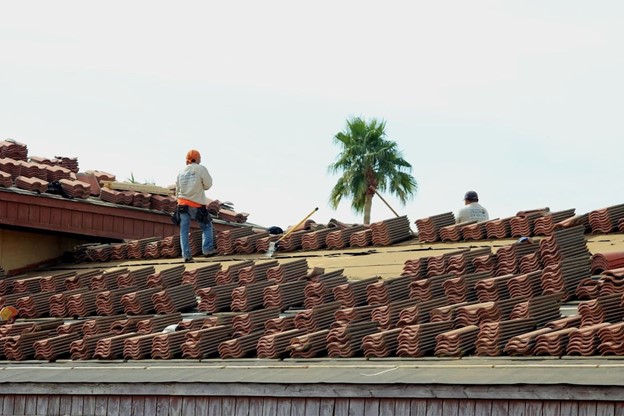Installing a new roof is a significant investment for homeowners and an essential project that impacts the safety, appearance, and value of your property. Whether your current roof has reached the end of its lifespan or you're upgrading to a more durable material, careful planning is required. Understanding the key considerations involved can help you make informed decisions and ensure a smooth installation process.
Working with Professional Roofers
One of the most important factors in ensuring a successful roof installation is working with a professional roofing company. Experienced roofers bring technical knowledge and expertise that guarantees the installation is done correctly, protecting your home from potential leaks and damage. It's crucial to hire a licensed and insured roofing contractor who has a strong track record in your area. Whether you get roof installation from Wholesale Roofers or another trusted roofing contractor, you’ll want to verify their credentials and ask for customer reviews or references. A professional roofer will not only guide you through selecting the right materials for your home but also handle all aspects of the installation, ensuring that local building codes are followed.
Additionally, experienced professionals can spot potential problems before they become major issues, saving you time and money in the long run. Working with a reputable contractor also gives you peace of mind. They will provide warranties for both materials and workmanship, ensuring your roof is covered in case of future issues. Be sure to ask for a detailed estimate and timeline before starting the project to avoid any surprises.
Choosing the Right Roofing Material
The type of roofing material you choose has a major impact on the longevity, appearance, and energy efficiency of your home. Options range from traditional asphalt shingles to more durable materials like metal, clay tiles, or slate. Each material has its benefits and drawbacks, including cost, lifespan, and weather resistance.
When selecting a roofing material, consider the climate in your region and the architectural style of your home. For instance, metal roofs are ideal for areas with heavy snowfall or strong winds, while clay tiles are better suited for warmer climates. Your roofing contractor can help you evaluate which material is best for your specific needs.
Energy efficiency is another important consideration. Some roofing materials, such as cool roofs or reflective metal, can help reduce energy costs by reflecting more sunlight and absorbing less heat. This can lower your cooling bills during the summer months and contribute to a more environmentally friendly home.
Budgeting for Your Roof Installation
Budget is a critical consideration when installing a new roof. While it may be tempting to choose the lowest-cost option, cutting corners can lead to higher costs in the long term due to poor materials or installation. It’s essential to plan your budget carefully, factoring in the cost of materials, labor, and any additional repairs that may be required during the installation.
A professional roofing contractor will provide a detailed estimate that includes all necessary costs, allowing you to plan accordingly. Keep in mind that while high-quality materials and workmanship may come with a higher upfront cost, they also offer better durability and long-term savings through reduced maintenance and energy efficiency.
Timing Your Roof Installation
Timing is another key consideration when planning a new roof installation. Weather conditions can significantly impact the installation process, so it's important to schedule the project during a time of year when the weather is predictable and favorable. For most regions, late spring and early fall are ideal times for roof installations, as the mild weather ensures that the materials can be installed correctly without interruptions from rain, snow, or extreme heat.
Additionally, consider any upcoming home projects that might affect your roof installation timeline. For example, if you're planning to paint or repair the exterior of your home, coordinating these projects with your roofing installation can help streamline the process and save costs.
Addressing Ventilation and Insulation
Proper roof ventilation and insulation are critical to the performance and longevity of your new roof. Without adequate ventilation, moisture can build up in the attic, leading to mold growth and structural damage. Poor ventilation can also cause your roof to overheat, shortening its lifespan and increasing your energy costs.
During the roof installation process, your contractor should inspect the existing ventilation system and recommend any necessary improvements. Ensuring that your roof is properly ventilated and insulated can protect your home from moisture damage and help regulate indoor temperatures, making your home more energy-efficient and comfortable.
Understanding Warranties and Maintenance
Before installing a new roof, it’s essential to understand the warranties provided by both the manufacturer and the roofing contractor. Most roofing materials come with manufacturer warranties that cover defects, while contractors typically offer warranties on workmanship. Be sure to clarify the details of both warranties and understand what is and isn’t covered.
In addition to warranties, regular maintenance is crucial to prolonging the life of your new roof. Schedule regular inspections and cleanings to remove debris, check for damage, and ensure that gutters are functioning properly. A well-maintained roof can last significantly longer and prevent costly repairs down the line.
Installing a new roof is a major investment, but with the right planning, materials, and professional help, you can ensure that the process is smooth and successful. Working with a reputable contractor, selecting the right materials, and addressing critical factors like ventilation and timing will not only protect your home but also add to its value for years to come.










